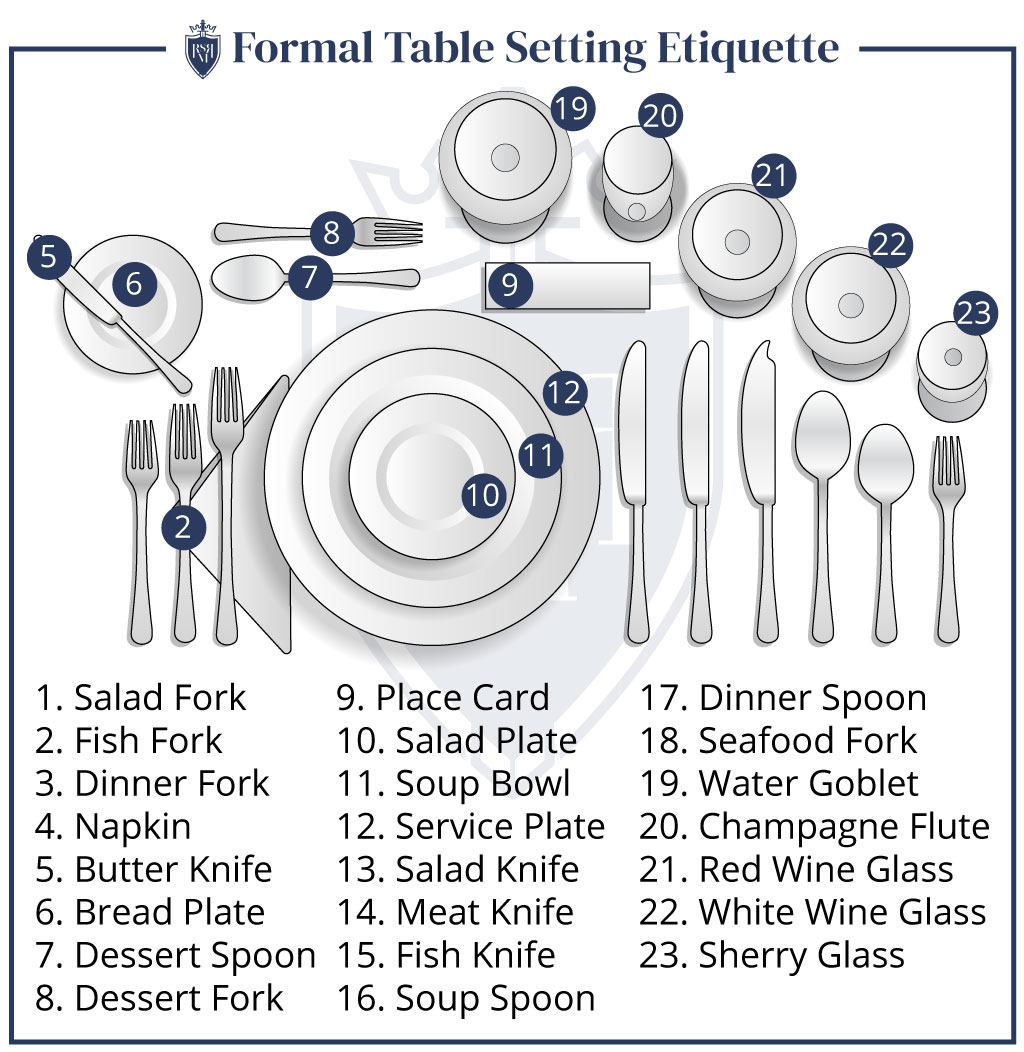Mastering Dining Etiquette: A Definitive Guide
In the realm of refined dining experiences, mastering dining etiquette isn't just about knowing which fork to use or how to hold a wine glass; it's a reflection of sophistication and respect for the culinary arts. Understanding dining etiquette is akin to decoding a language of manners that transcends borders and cultures, enhancing one's enjoyment of gastronomic delights while navigating social interactions seamlessly.
1. What is Dining Etiquette?
Dining etiquette, often referred to as table manners or table etiquette, encompasses a set of social norms and practices governing behavior during meals.
It goes beyond mere utensil placement or posture; it embodies a code of conduct that respects fellow diners, hosts, and the culinary experience itself.

dining etiquette definition
2. Key Elements of Dining Etiquette
Seating Protocol: Understanding where to sit in relation to the host or guest of honor sets the tone for the meal.
The host typically dictates seating arrangements, with guests of honor seated to their right.
3. Utensil Usage:
From the soup spoon to the dessert fork, knowing which utensil to use for each course demonstrates finesse.
The general rule is to work from the outside in, using utensils in order of appearance on the table.
4. Napkin Etiquette:
The napkin isn't just for dabbing at spills; it serves as a tool for maintaining cleanliness and signaling the beginning and end of the meal.
Upon seating, place the napkin on your lap, and gently dab your mouth as needed throughout the meal. When finished, place the napkin loosely to the left of your plate.
5.Engagement in Conversation:
Engaging in polite conversation adds flavor to the dining experience.
However, it's essential to strike a balance between participation and allowing others to enjoy their meal in peace.

dining etiquette definition
6. Respectful Consumption:
Pace your eating to align with the overall rhythm of the meal. Avoid slurping, talking with food in your mouth, or reaching across the table.
Additionally, be mindful of dietary restrictions and preferences of fellow diners.
7. Handling Glassware:
Whether it's a fine wine or sparkling water, knowing how to handle glassware with elegance is essential.
Hold stemmed glasses by the stem to avoid warming the contents with body heat and to prevent unsightly fingerprints.
8. Thanking the Host:
Expressing gratitude to the host for their hospitality is a cornerstone of dining etiquette.
A sincere thank-you at the conclusion of the meal reflects appreciation for the effort put into the dining experience.
In essence, dining etiquette is the art of making others feel comfortable and valued in any dining setting. It transcends cultural boundaries, serving as a universal language of civility and refinement. By embracing dining etiquette, one not only elevates the dining experience but also cultivates meaningful connections and lasting impressions.